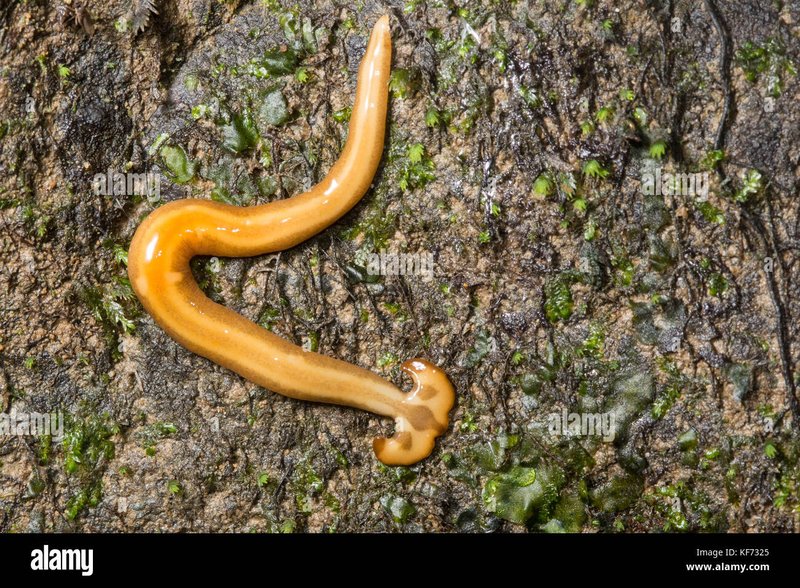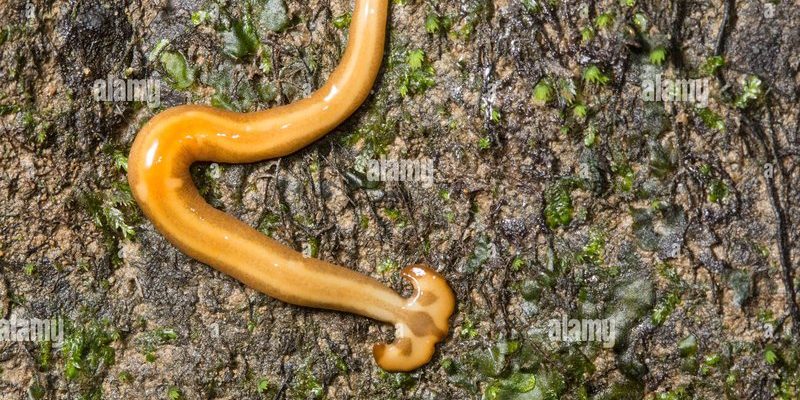
If you’ve ever gone fishing or explored a local pond, you might have seen planaria. They tend to pop up in damp environments, where they hang out, munching on decaying organic matter and tiny microorganisms. But just like any other species, planaria are not invincible. In this article, we’ll dive into the world of these intriguing worms and explore the predators and environmental factors that put their populations at risk.
What Are Planaria?
To understand the threats to planaria, we first need to know what they are. Planaria are flatworms belonging to the phylum Platyhelminthes. They can be found in various shapes, colors, and sizes, which is quite cool. Most of them are only a few millimeters long, but they can range up to several centimeters depending on the species.
One of their standout features is their ability to regenerate. If a planarian loses part of its body—say, a tail—it can grow it back, almost like a superhero with healing powers. This ability allows them to survive in challenging conditions, but it doesn’t make them immune to threats. They are also important in the food web, serving as prey for many fish and other aquatic animals.
You might be wondering why we should care about these tiny creatures. Well, planaria help control algae and bacteria in waterways, acting as a natural cleaning crew. Keeping their populations healthy ensures that our water systems remain balanced.
Predators of Planaria
Planaria have a few natural enemies, and it’s a tough world out there for these little guys. Various animals prey on them, including fish, frogs, and even some birds. For instance, fish like guppies and bettas will happily munch on planaria, making them a favorite snack. As a source of protein, planaria are quite appealing to these predators.
But the threat doesn’t stop there. Larger insects and aquatic larvae, such as dragonfly nymphs, are also known to hunt planaria. They use their speed and stealth to ambush these delicate worms. It’s a survival of the fittest scenario in action, and planaria must constantly be on their guard.
One interesting predator is the crayfish. These critters are not just scavengers; they actively hunt planaria, contributing to the decline of their populations in certain areas. The interplay between planaria and their predators showcases the delicate balance of aquatic ecosystems. When one species thrives, others may struggle.
Environmental Threats to Planaria
While predators are a significant concern, planaria also face a range of environmental threats. Changes in their habitats can make life difficult. For example, pollution from agriculture or urban areas often leads to degraded water quality. Chemicals like pesticides and fertilizers can enter rivers and ponds, harming aquatic life, including planaria.
Temperature changes also pose a risk. Planaria thrive in stable environments, and sudden fluctuations can impact their ability to reproduce and survive. If water temperatures rise too high or drop too low, their populations could dwindle. Think of it like throwing a temperature-sensitive party: if it’s too hot or too cold, guests start to leave.
Another factor to consider is habitat destruction. Activities like draining wetlands or damming rivers disrupt the natural flow of water. When planaria lose their habitat, their populations decline. It’s a ripple effect—when their homes are destroyed, the entire ecosystem suffers.
The Impact of Invasive Species
Invasive species are like unwanted guests that never leave the party. They can cause massive disruptions in ecosystems, and planaria are no exception. When non-native species enter a habitat, they often outcompete local wildlife for food and resources. This competition can put pressure on planaria populations.
For instance, certain types of fish introduced into new waters can become voracious predators of planaria. They may not have natural enemies in this new environment, allowing their populations to explode while planaria struggle to survive.
Additionally, some invasive organisms can introduce diseases or parasites that adversely affect planaria. With their resources stretched thin, these little flatworms can rapidly decline, leading to imbalances in their ecosystems. It’s essential to manage and monitor invasive species to protect the little guys.
Human Activities and Their Effects
You might be surprised to learn how much human activities impact planaria. Urban development, agriculture, and even recreational activities can harm their populations. For example, the construction of buildings and roads can lead to increased runoff, which may carry pollutants into nearby water systems.
Agriculture, as mentioned earlier, uses chemicals that can seep into water sources. These chemicals not only harm planaria but also disrupt the entire ecosystem, affecting fish and other aquatic life. If you think about it, it’s like throwing a wrench into an intricate machine—when one part fails, the whole system can break down.
Even recreational activities, like boating or fishing, can disturb planaria habitats. When people paddle through water bodies, they can disrupt the sediment where planaria live. This can lead to habitat loss and a decrease in their populations over time.
Conservation Efforts and What You Can Do
Now that we know the threats to planaria, it’s important to talk about what can be done to help. Conservation efforts are crucial for maintaining healthy ecosystems. Organizations often work to monitor planaria populations and their habitats, particularly in areas where environmental changes are occurring.
You can also play a part. Here are some simple steps you can take to protect planaria and their environments:
- Reduce chemical use: If you garden or farm, try to limit pesticides and fertilizers. Use natural alternatives to keep chemicals out of waterways.
- Practice responsible water usage: Be mindful of water runoff from your property. Creating rain gardens can help filter water before it enters streams.
- Support local conservation efforts: Get involved with organizations that focus on protecting freshwater ecosystems.
By taking these actions, you’re contributing to the conservation of not only planaria but also the broader aquatic ecosystem.
Planaria may be small, but their role in ecology is enormous. They face numerous threats from predators and environmental changes, and understanding these issues is key to their survival. From natural predators to human activities, many factors can influence their populations.
By being aware of these challenges and taking steps to protect our waterways, we can help ensure that these remarkable flatworms continue to thrive in their natural habitats. After all, every little bit counts when it comes to preserving the biodiversity of our planet. So, the next time you’re near a pond or stream, remember the tiny heroes swimming beneath the surface, working hard to keep our ecosystems balanced.

